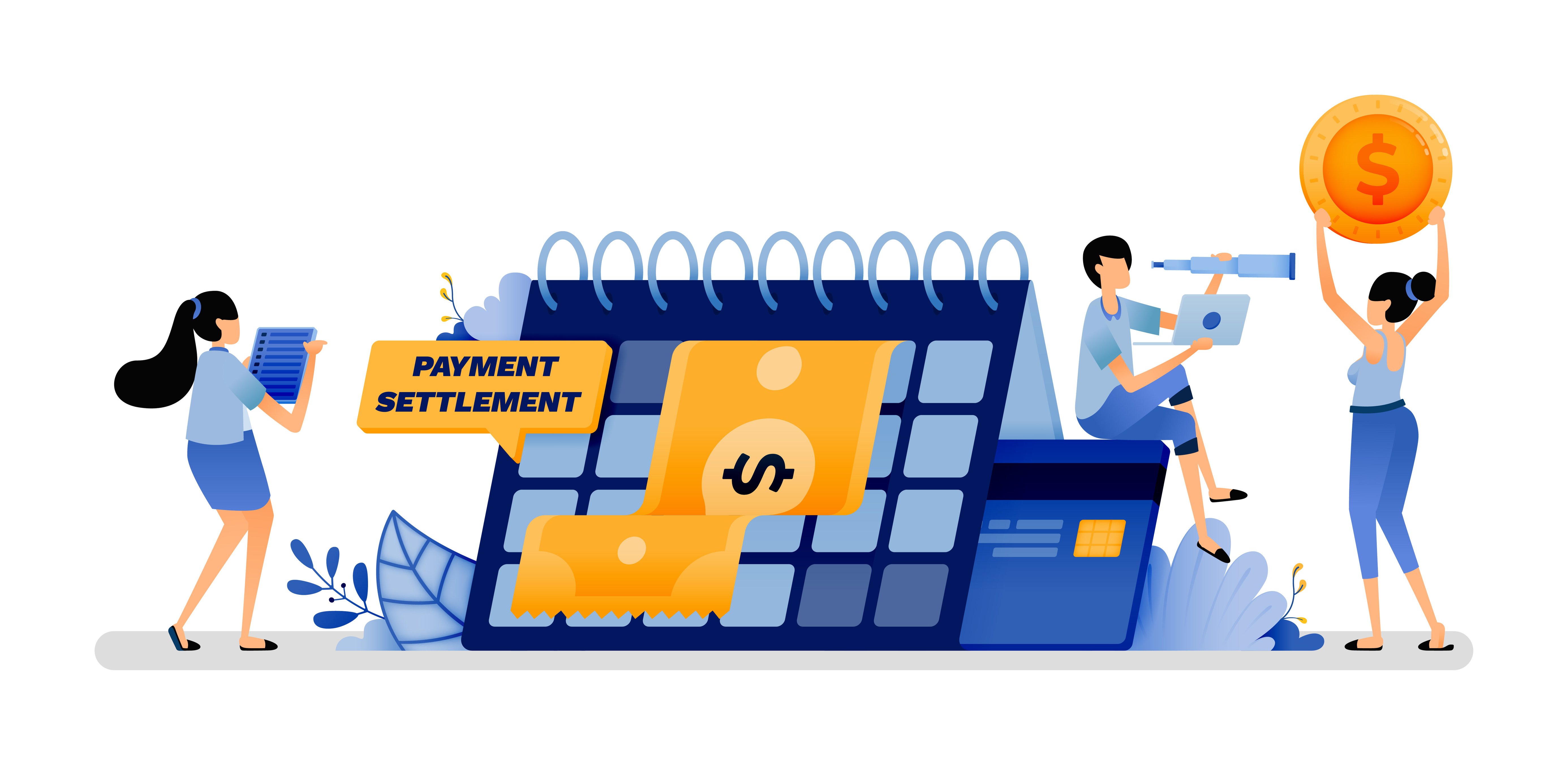Credit terms are agreements that let buyers pay for goods or services at a later date, usually based on an invoiced amount. This arrangement between buyer and seller specifies the payment due date and is recorded under accounts receivable. In the B2B sector, offering credit terms has become standard practice due to the frequency and volume of transactions.
Despite their popularity, late payments remain a challenge—around 16% of small businesses face delays, compared to 14% of mid-sized companies. Such delays can disrupt cash flow, highlighting the importance of managing credit terms effectively.
Interestingly, extending credit can also fuel business growth. It enables customers to make purchases without paying immediately, often leading to increased sales and reduced hesitation, especially for clients with limited upfront funds.
Still, offering credit requires strategy. It’s not only about boosting revenue but also about controlling risk and safeguarding cash flow. Small business owners must learn how to assess customer creditworthiness and set fair terms.
With modern technology, tracking payments and managing overdue accounts has become easier, helping reduce late payments and minimizing financial pressure.
Types of credit and payment terms to consider giving
It’s common to see B2B invoices inscribed with abbreviations like 5/10 N/45 or 2/10 N/30. Not so intuitive right? It’s easy to understand how anyone could get confused with this terminology and easily mistake the numbers for a top-secret passcode.
In addition to having the total amount due on an invoice, these numbers indicate the number of days a buyer has to clear their payments. Some numbers indicate that an early payment discount is available as some businesses may give cash discount to a buyer that makes full payment before the due date.
One common term is E.O.M which means, end-of-the-month. This means that the invoice is payable on the indicated days after the end month. For instance, if an invoice has the terms “N12 E.O.M.,” this means that the buyer must make the invoice payment 12 days after the end of the month.
Other standard payment terms include:
N/10, N/30
The N stands for net credit period. The number indicates the maximum number of days that the buyer has to make the B2B payment.
2/10 or 2/15 R.O.M
R.O.M stands for receipt of goods.
If there are two numbers outlined in a payment term, the first number denotes the discount if specific credit terms are met. The second number denotes the period in which the discount is provided.
For example, 2/10 R.O.M signifies that the buyer will receive a 2% discount if they pay within 10 days of receiving the goods.
Example: How to provide credit terms
Let’s walk through an example.
Sandy’s Gourmet Cookies sells $2,000 of custom-made cookies to a retail store called Frida’s Delights on April 22.
Sandy’s Gourmet Cookies decides to offer Frida’s Delights credit terms of 2/10 N/30
What does this mean?
2/10: If Frida’s Delights makes the $2,000 payment within 10 days, they’ll enjoy a 2 percent discount.
N/30: If Frida’s Delights does not make the payment within the first 10 days, Sandy’s Gourmet Cookies will expect full payment within the subsequent 20 days. If there were no discount terms, the invoice would simply read N/30, giving Frida’s Delight 30 days after the invoice date to pay the invoice.
When presented to your customer, here is what you should consider including in your credit terms:
- Dollar amount of credit that you are extending
- The period in which the buyer must make the full payment
- Discounts on early payments
- Penalties for late payments
What about trade credits?
Trade credits are a type of credit financing extended to a customer by the vendor. Commonly known as accounts payable or trade payables, this line of credit is usually interest-free unless there’s a late payment.
Factors affecting credit terms
There is no right or wrong way of establishing a credit policy because every business, customer, transaction, and situation is unique.
Here are a few factors to consider if you are thinking about establishing terms of payment with your customers:
Customer’s credibility
Deciding to extend credit to a customer should depend on their repayment capacity and payment history (creditworthiness). Companies are less likely to extend longer credit terms to new customers than a repeat customers. The most effective way to check their creditworthiness is be reviewing their business credit score through a third party.
Interest rate factor
As a seller, you may choose to charge interest over the entire credit period or the duration of the overdue payment. This decision usually depends on the exact amount and the duration of the credit period.
Time factor
Some products have a longer shelf life compared to others. As industry practice, this extended shelf life usually translates to an extended repayment period for such a credit sale.
Level of competition
Offering enticing credit terms to attract more customers is one way to grow business and stay ahead of competition. Unfortunately, some companies may be too lenient and informal when providing credit terms just to get the competitive edge. This may result in poor credit choices (as customers may be given too much credit), defaulted payments, and pressure on the company’s cash flow.
What’s the solution for credit terms drawbacks
Like any credit practice, providing net terms has its disadvantages. The most significant risks of providing credit terms are late payments and even worse, non-payments. A business can protect itself from these risks through a few mitigating strategies such as outsourcing the entire process.
Many companies outsource their credit management process to companies like Resolve, a net terms-as-a-service provider, to oversee all credit terms. Resolve’s credit management team manages all aspects of credit checking, net terms decisions, and accounts receivables automation. A company like Resolve is simple and easy to use and eliminates many timely tasks including following-up with late payments.
Resolve takes on the risk of default payments or late payments from buyers. In addition to managing credit checks and setting net-terms, they also advance-pay up to 90% of a buyer’s invoice to ensure companies maintain predictable and healthy cash flows.
Before providing net terms, Resolve conducts the vital steps of conducting business credit checks using its proprietary financial database and algorithms. This process takes only minutes. When new customers request net terms or existing customers exceed existing credit limits, this check verifies that the borrower is capable of making reliable and timely payments and does not harbor bad debts.
Another solution to preventing late or defaulted payments is to offer flexible payment methods. In 2021, the B2B payments market was valued at $903.50 billion and customers now expect more payment methods to select from including ACH, checks, wire transfers, and business debit and credit cards.
Some of these payment options can be complicated and costly for companies and so, using an end-to-end receivables management company like Resolve (who offers all these payment option) can be another benefit.
Managing credit terms in your business
Nowadays, it’s nearly impossible to conduct a B2B transaction without providing credit. Being proactive and building a strategy and process for credit terms is one way to minimize the risk of late payments or worse, non-payment.
Credit terms gives businesses certainty around payment dates and minimizes cash flow woes. Enticing customers to pay promptly with incentives such as discount terms for early payments is another factor to consider when building a credit terms strategy.
At the end of the day, a company’s bookkeeping, income statements and balance sheets showcase the health your business. Launching net terms is one way to keep your business healthy and strong.
Frequently Asked Questions
Quick answers to help you apply credit terms with confidence. Use these links for deeper guidance when you need it.
What do terms like 2/10 N/30 mean?
They show an early payment discount and a final due date. For example, 2/10 N/30 gives a 2% discount if paid in 10 days, otherwise the net amount is due in 30 days. See 2/10 Net 30.
How do you decide who qualifies for credit terms?
Use business credit reports, trade references, and payment history. Set limits and review them on a schedule. See business credit checks.
Do early payment discounts reduce late payments?
Yes, well-designed discounts prompt faster settlement and lower DSO. A common structure is 1–2% within 10 days on Net 30 invoices. Learn more about cash discounts.
What steps should you take when a customer pays late?
Send a clear reminder, apply disclosed late fees, and place new orders on hold. Review terms for the account or use a receivables partner if risk rises. See accounts receivable management.







